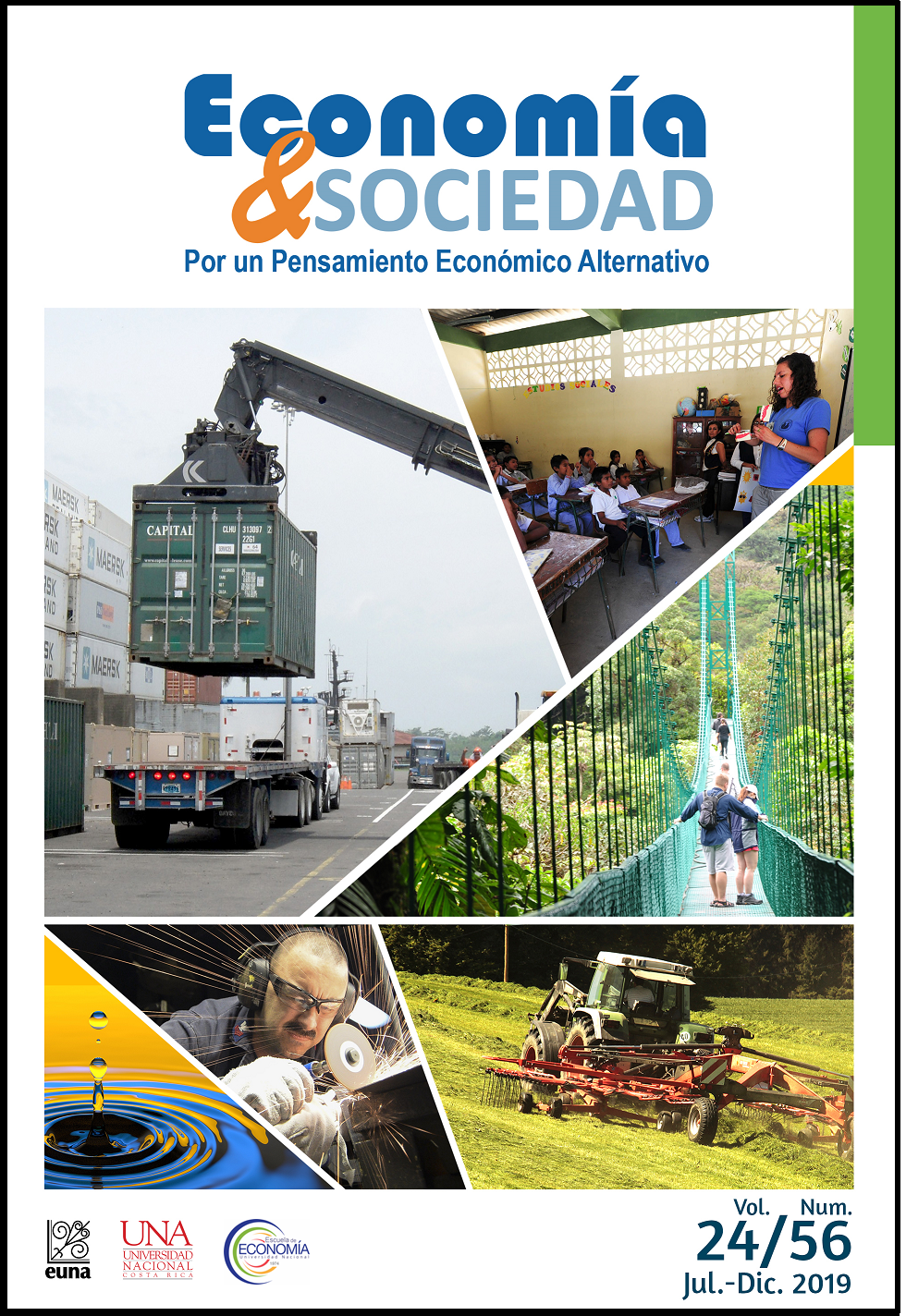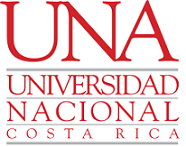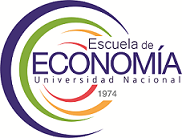Análisis SEM para el gasto turístico en un país emergente
DOI:
https://doi.org/10.15359/eys.24-56.4Palabras clave:
SEM, gastos turísticos, variables socioeconómicas, variables de motivoResumen
El siguiente estudio intenta examinar la relación entre las preferencias del consumidor y el gasto en un marco de Modelo de Ecuación Estructural (SEM, por sus siglas en inglés). Usamos datos de una encuesta aplicada en un país emergente como Perú. Hubo 6 772 encuestados clasificados por sexo, país de residencia, nivel educativo y edad. Los encuestados extranjeros especificaron sus motivos y preferencias para viajar, así como el dinero gastado. La técnica SEM permite encontrar una relación entre las últimas variables. Esta evaluación es relevante para los responsables de la política turística, ya que ayudará a encontrar los principales factores de gasto de los visitantes extranjeros dentro de un país emergente. Nuestro estudio permitió identificar los motivos para visitar: ocio, negocios y educación, y otros, como principales impulsores del gasto turístico.
Referencias
Bollen, K., Tueller, S., and Oberski, D. L. (2013). “Issues in the Structural Equation Modeling of Complex Survey Data”. In Proceedings of the 59th World Statistics Congress. Hong Kong. Downloadable at http://www.2013.isiproceedings.org/Files/STS010-P1-S.pdf
Chaitip P., Chaiboonsri, C., Kovács, S. and Balogh, P. (2010). A Structural Equation Model: Greece’s Tourism Demand for Tourist Destination. Applied Studies in Agribusiness and Commerce, (2), pp.75-83. doi: https://doi.org/10.22004/ag.econ.91116
Correia A., Santos C., Pestana C. (2007). Tourism in Latin America: A Choice. Analysis Annals of Tourism Research, 34(3), July, pp. 610-629. doi: https://doi.org/10.1016/j.annals.2007.01.007
Dardis, R., Derrick, L., and Wolfe (1981). Cross-section studies of recreation expenditures in the United States. Journal of Leisure Research, (13), pp. 181-194. doi: https://doi.org/10.1080/00222216.1981.11969482
Dardis, R., Soberon-Ferrer, H., and Patro, D. (1994). Analysis of leisure expenditure in the United States. Journal of Leisure Research, (26), pp. 309-321. doi: https://doi.org/10.1080/00222216.1994.11969964
Desforges, L. (2000). State tourism institutions and neo-liberal development: A case study of Peru. Tourism Geographies: An International Journal of Tourism Space, Place and Environment, 2(2). doi: https://doi.org/10.1080/14616680050027888
Divino, J. A. and McAleer, M. (2010). Modelling and forecasting daily international mass tourism to Peru. Tourism Managemen, 31(6), pp. 846-854. doi: https://doi.org/10.1016/j.tourman.2009.09.002
Dong-Wan, K. and Stewart, W. (2002). A structural equation model of residents’ attitudes for tourism development. Tourism Management, 23(5), pp. 521-530. doi: https://doi.org/10.1016/S0261-5177(02)00006-7
Hu, L. and Bentler, P. M. (1999). Cutoff criteria for fit indexes in covariance structure analysis: Conventional criteria versus new alternatives. Structural Equation Modelling, 6(1), pp. 1-55. Educational Psychologist, 27(1), pp. 65-90. doi: https://doi.org/10.1080/10705519909540118
Jones, T., Wood, D., Catlin, J., and Norman, B. (2009). Expenditure and ecotourism: Predictors of expenditure for whale shark tour participants. Journal of Ecotourism, 8(1), pp. 32-50. doi: https://doi.org/10.1080/14724040802517922
Jöreskog, K. G. and Sörbom, D. (1982). Recent developments in structural equation modeling. Journal of marketing research, 19(4), pp. 404-416. doi: https://doi.org/10.1177/002224378201900402
Kruger, M. (2009). Spending behaviour of visitors to the Klein Karoo National Arts Festival. MA dissertation North-West University, Potchefstroom, pp. 66. Downloadable at: https://repository.nwu.ac.za/handle/10394/2479
Lehto, X., O’Leary, J., and Morrison, A. (2004). The effect of prior experience on vacation behavior. Annals of Tourism Research, 31(4), pp. 801-818. doi: https://doi.org/10.1016/j.annals.2004.02.006
Mitchell, R. E. and Reid, D. G. (2001). Community integration: Island tourism in Peru. Annals of Tourism Research, 28(1), pp. 113-39. doi: https://doi.org/10.1016/S0160-7383(00)00013-X
Mok, C. and Armstrong, R. (1995). Leisure travel destination choice criteria of Hong Kong residents. Journal of Travel and Tourism Marketing, 4(1), pp. 99-104. doi: https://doi.org/10.1300/J073v04n01_07
Mok, C. and Lam, T. (1997). A model of tourists’ shopping propensity: A case of Taiwanese visitors to Hong Kong Pacific. Tourism Review, 1(2), pp. 137-145. Downloadable at: https://www.ingentaconnect.com/contentone/cog/ptr/1997/00000001/00000002/art00006
Saayman, M. and Saayman, A. (2014). How Deep are Scuba Diver’s pockets. Tourism Economics, 20(4), pp. 813-829. doi: https://doi.org/10.5367%2Fte.2013.0299
Seiler, V., Hsieh, S., Seiler, M., and Hsieh, C. (2002). Modeling Travel Expenditures for Taiwanese Tourism. Journal of Travel & Tourism Marketing, 13(4), pp. 47-60. doi: https://doi.org/10.1300/J073v13n04_03
Swanson, K. and Horridge, P. (2004). A structural model for souvenir consumption, travel activities, and tourist demographics. Journal of Travel Research, 42(4), pp. 372-380. doi: https://doi.org/10.1300/J073v13n04_03
Van der Merwe P., Slabbert E., and Saayman M. (2011). Travel Motivations of Tourists to Selected Marine Destinations. Int. J. Tourism Res. (13), pp. 457-467. doi: https://doi.org/10.1002/jtr.820
Vargas-Sánchez, A., Porras-Bueno, N., and Plaza-Mejía, M. (2011). Explaining residents’ attitudes to tourism: Is a universal model possible? Annals of Tourism Research, 38(2), pp. 460-480. doi: https://doi.org/10.1016/j.annals.2010.10.004
World Bank (2016). “Database”. Downloadable at: http://data.worldbank.org/
World Travel and Tourism Council [WTTC]. (2016). Economic Impact of Regions. Oxford Economic. Downloadable at: https://www.wttc.org/-/media/files/reports/economic-impact-research/regions-2019/world2019.pdf
Descargas
Publicado
Cómo citar
Número
Sección
Licencia
Esta publicación está adscrita a Creative Commons; deben respetarse sus atribuciones y restricciones.
Los autores/as que publiquen en esta revista aceptan las siguientes condiciones:
- Los autores/as conservan los derechos de autor y ceden a la revista el derecho de la primera publicación, con el trabajo registrado con la Licencia Creative Commons Atribución-NoComercial-CompartirIgual 4.0 Internacional, que permite a terceros utilizar lo publicado siempre que mencionen la autoría del trabajo y a la primera publicación en esta revista.
- Los autores/as pueden realizar otros acuerdos contractuales independientes y adicionales para la distribución no exclusiva de la versión del artículo publicado en esta revista (p. ej., incluirlo en un repositorio institucional o publicarlo en un libro) siempre que indiquen claramente que el trabajo se publicó por primera vez en esta revista.
- Se permite y recomienda a los autores/as a publicar su trabajo en Internet (por ejemplo en páginas institucionales o personales) antes y durante el proceso de revisión y publicación, ya que puede conducir a intercambios productivos y a una mayor y más rápida difusión del trabajo publicado.

Revista Economía y Sociedad by Universidad Nacional is licensed under a Creative Commons Reconocimiento-NoComercial-CompartirIgual 4.0 Internacional License.
Creado a partir de la obra en http://www.revistas.una.ac.cr/index.php/economia









